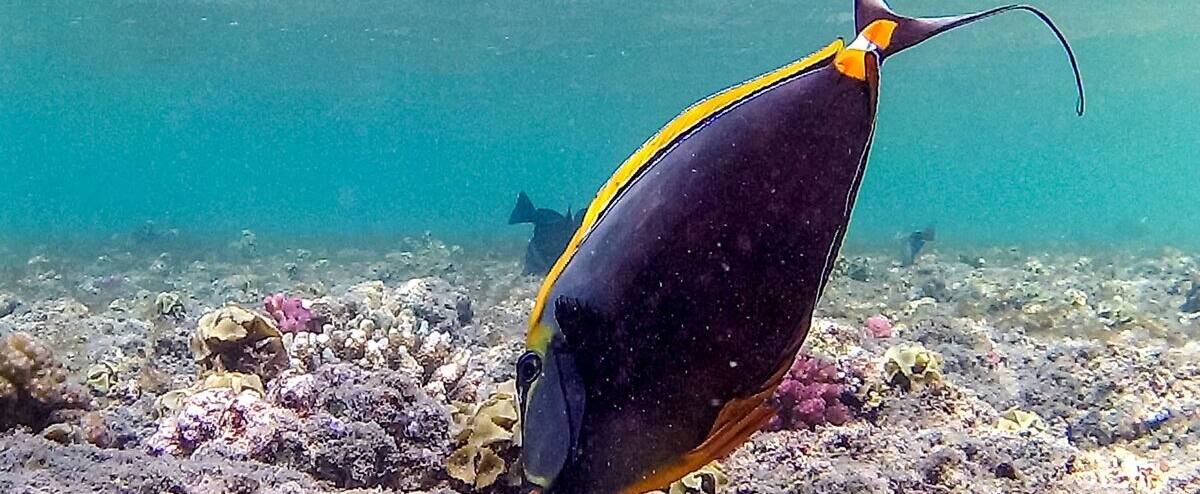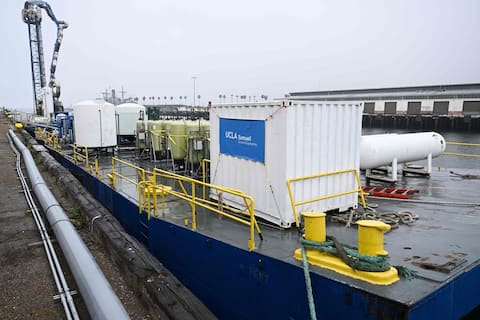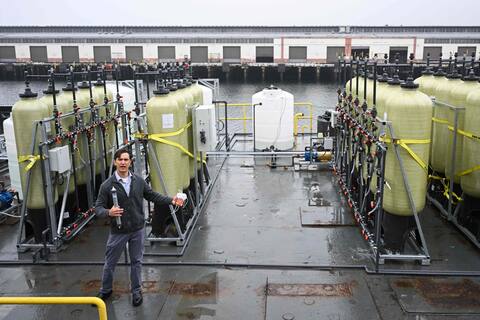In the port of Los Angeles, a strange barge covered with pipes and tanks is home to an idea that promises to make waves: to use the ocean as a CO2 sponge, to remove this greenhouse gas from the ocean. ‘atmosphere.
• Read also: Climate Skeptical Studies Sneak Into Scientific Journals
A team of scientists from UCLA University has been working for two years on this ambitious project to fight against global warming, called SeaChange.
Their goal is “to use the ocean like a big sponge,” Gaurav Sant, director of UCLA’s Carbon Management Institute (ICM), told AFP.
The seas covering most of the Earth are our best climate ally, because the ocean acts as an essential buffer: it absorbs more than a quarter of all carbon dioxide (CO2) emissions and 90% of the heat they have issued in recent decades.
But the planet’s main carbon sink is in danger: the ocean is acidifying and rising temperatures are reducing its absorption capacity. The team wants to increase it, thanks to an electrochemical process that removes the CO2 contained in seawater.
“If we manage to eliminate the carbon dioxide present in the oceans, we essentially renew their capacity to capture additional carbon dioxide from the atmosphere”, summarizes Mr. Sant. Like when you squeeze a sponge to recover its absorption power.
Photo Patrick T. Fallon / AFP
Gaurav Sant
Trapped in minerals
The engineers therefore developed a floating mini-factory on a boat about thirty meters long, which pumps seawater and subjects it to an electrical charge.
Electrolysis triggers a series of chemical reactions that end up neutralizing the CO2 initially contained in the water. It becomes trapped in a fine white powder that contains calcium carbonate, an element found in chalk, limestone or shells, and magnesium bicarbonate.
These natural minerals can be released into the ocean, which “stores CO2 in a very sustainable way (…) for tens of thousands of years”, according to Mr Sant. And the pumped water returns to the sea, ready to reabsorb greenhouse gases from the air.
The engineer is convinced that the process will have no impact on the marine environment, an intuition that remains to be confirmed.
In addition to removing CO2 from the atmosphere, the process also produces hydrogen, a gas essential to the energy transition that could power the clean trucks, trains or planes of tomorrow.
Photo Patrick T. Fallon / AFP
The equipment of the SeaChange research team, on a boat in the port of Los Angeles.
The priority for curbing climate change remains to drastically reduce our C02 emissions, which humanity is currently unable to do.
But at the same time, most scientists point out that CO2 capture and storage techniques, grouped under the name “carbon dioxide removal” (CDR), will play a complementary role in keeping the planet livable.
First, to achieve carbon neutrality by 2050 by offsetting emissions from industries that are the most difficult to decarbonise, such as aviation, cement or steel. Then, to attack the stocks of CO2 accumulated in the atmosphere for decades.
• Read also: G7 final sprint to beef up its action in the face of the climate emergency
“Promising Solution”
Keeping warming under control requires extracting between 450 billion and 1.1 trillion tonnes of C02 from the atmosphere by 2100, according to the first global report dedicated to the subject, released in January.
This implies that the CDR sector “will grow at a rate of around 30% per year over the next 30 years, much like solar and wind have done”, insists one of its authors, Gregory Nemet. , a professor at the University of Wisconsin-Madison.
UCLA’s technology “falls into the category of promising solutions that could be large enough to have an impact on the climate,” he said.
Photo Patrick T. Fallon / AFP
Dante Simonetti, biomolecular engineer and associate professor at UCLA.
By sequestering CO2 directly in the ocean in mineral form, it clearly distinguishes itself from another popular technique: direct capture of CO2 from the air (DAC). This requires finding a site to store the gas in the ground, a very complex and expensive process.
“A big advantage of our process is that we don’t need to pump CO2 into the ground,” continues Mr. Sant.
The project must now be marketed by a start-up, Equatic, responsible for demonstrating its feasibility on an industrial scale and selling carbon credits to companies wishing to offset their emissions.
In addition to the Los Angeles barge, a similar boat is currently being tested in Singapore.
The feedback from the two sites should make it possible to design much larger factories, capable of “sequestering thousands of tonnes of CO2 per year”, according to Mr. Sant. The engineer hopes that they will be operational within “18 to 24 months”.



